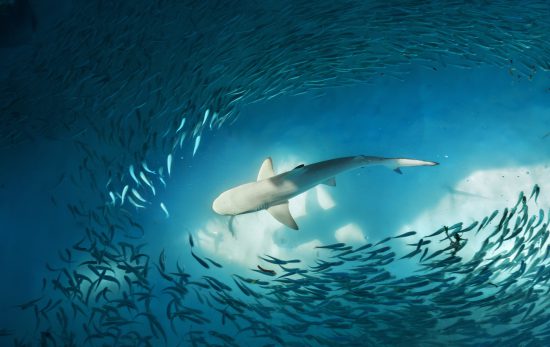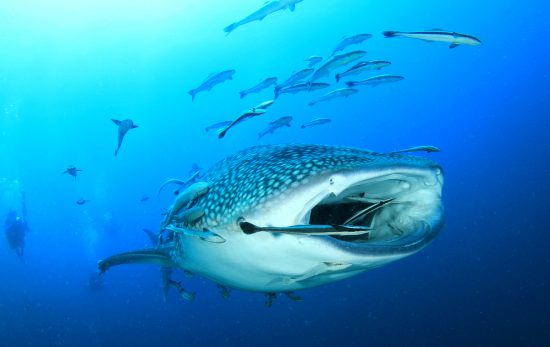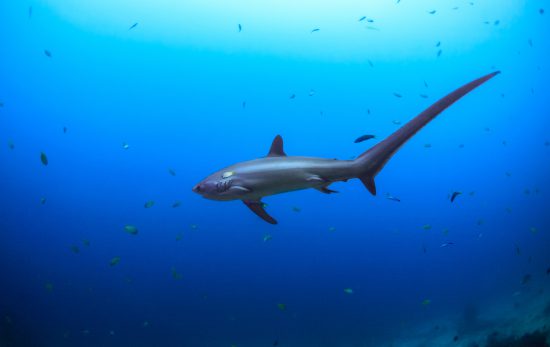Although the Philippines is bursting with hundreds of different shark species, most divers visit in the hope of seeing the famous thresher shark. Known for their unique tail and interesting hunting habits, threshers are frequent visitors to Malapascua Island, which is actually one of the most consistent destinations around the world for thresher shark sightings. It is no surprise that shark enthusiasts and underwater photographers continue to flock here. If you are interested in seeing these long-tailed creatures underwater, you’ll find all the information you need to plan your trip below.
What Are Thresher Sharks?
Thresher sharks are also called ‘Fox Sharks’, and there are three living species: Pelagic Thresher, Bigeye Thresher, and the Common Thresher. One of these species, the pelagic thresher shark (Alopias pelagicus), is known to inhabit the waters of Malapascua Island. It’s the smallest of the three species. It’s about three meters / 10 feet long and weighs in at around 70 kg / 153 lb. This species of shark is further characterized by the highly elongated upper lobe of its caudal fin. Thresher sharks use their long fins like a whip to strike prey (especially small fish). It is from this ‘whipping’ or ‘threshing’ action that the name ‘thresher’ shark originates. In addition to its other distinguishing characteristics, this species is a particularly strong swimmer and can even be seen jumping out of the water (breaching).
Pelagic threshers are also known to be a solitary and often shy species. Threshers are therefore easily spooked by divers’ bubbles and sudden movements. When diving in Malapascua, aim to remain still while calmly and passively observing these incredible sharks.
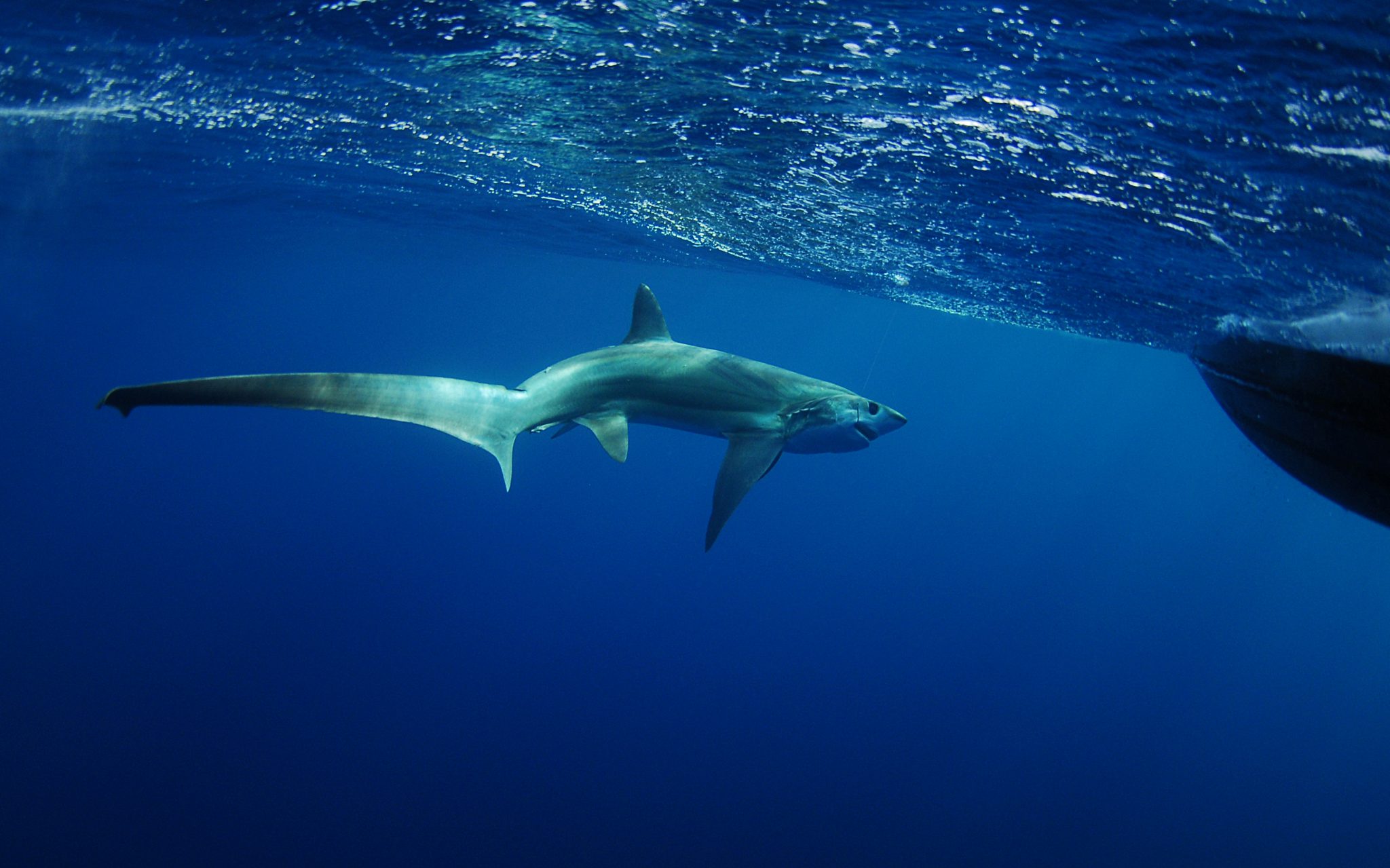
Are Thresher Sharks Dangerous?
There is no evidence to indicate that thresher sharks are dangerous or pose a threat to divers. Pelagic threshers are not aggressive and there are no reported attacks on humans. Due to this species’ shy nature (see above), once it encounters a diver, it will usually change direction and leave the area.
Despite not being dangerous themselves, thresher shark populations are declining, and they are currently listed with the conservation status ‘vulnerable‘. Unfortunately, thresher shark numbers are threatened by illegal shark finning, indiscriminate fishing practices such as long lining, and marine pollution.
Where To Find Thresher Sharks in Malapascua?
Malapascua is a small island in the Philippines, situated in the Visayan Sea close to Cebu Island. This tropical island is famous for being one of the most attractive dive destinations on the planet. Here it’s nearly always possible to dive with many impressive marine creatures, including pelagic thresher sharks.
Monad Shoal dive site is one of Malapascua’s best known spots for consistent thresher shark sightings. Thresher sharks are more active in the early morning and at that time, they come to a coastal seamount – or the ‘shoal’. The dive site is 20 to 30 minutes by boat from Malapascua and threshers visit a cleaning station here. At the cleaning station, the sharks are cleaned by two different species of cleaner wrasse. Once at the cleaning station, thresher sharks display a similar type of behavior to manta rays. The threshers remain as stationary as possible, thereby allowing the cleaner fish to get to work!
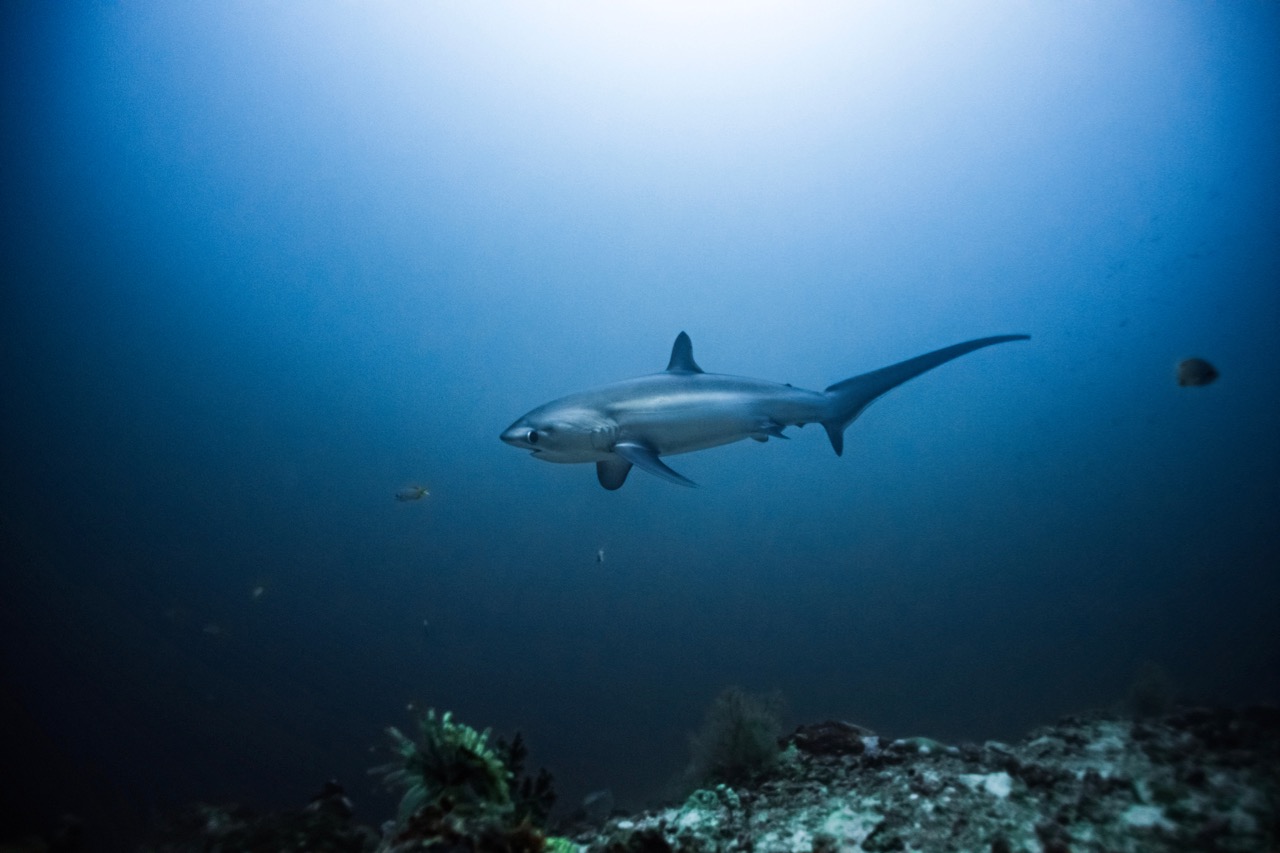
When Is the Best Time To Dive in Malapascua?
It is possible to dive around Malapascua Island and see thresher sharks all year round. However, that being said, the best visibility at Malapascua’s dive sites is found from January to April. These months are considered the ‘peak’ months, or the ‘thresher shark season’. As mentioned below, pelagic thresher sharks are most active in the early morning, between six and nine in the morning. Be prepared for some early morning starts during your stay!
What To Expect When Thresher Shark Diving in Malapascua, Philippines
Expect an early start! Dive boat departure times vary according to tides but are usually between 6:30 AM and 8:30 AM.
The cleaning stations themselves are between 22 and 27 meters (72 to 89 feet), and these depths give the best chances of a sighting. Dives at Monad Shoal involve descending to the cleaning stations and calmly waiting for the action to begin. While waiting for a thresher to make an appearance, don’t be surprised if you spot a manta rays, mobula (devil) rays, or even a passing hammerhead!
Note: This dive is only recommended for Advanced Open Water Divers due to the depth. Monad Shoal is also an excellent site for diving with enriched air (nitrox) to extend your allowable bottom time.
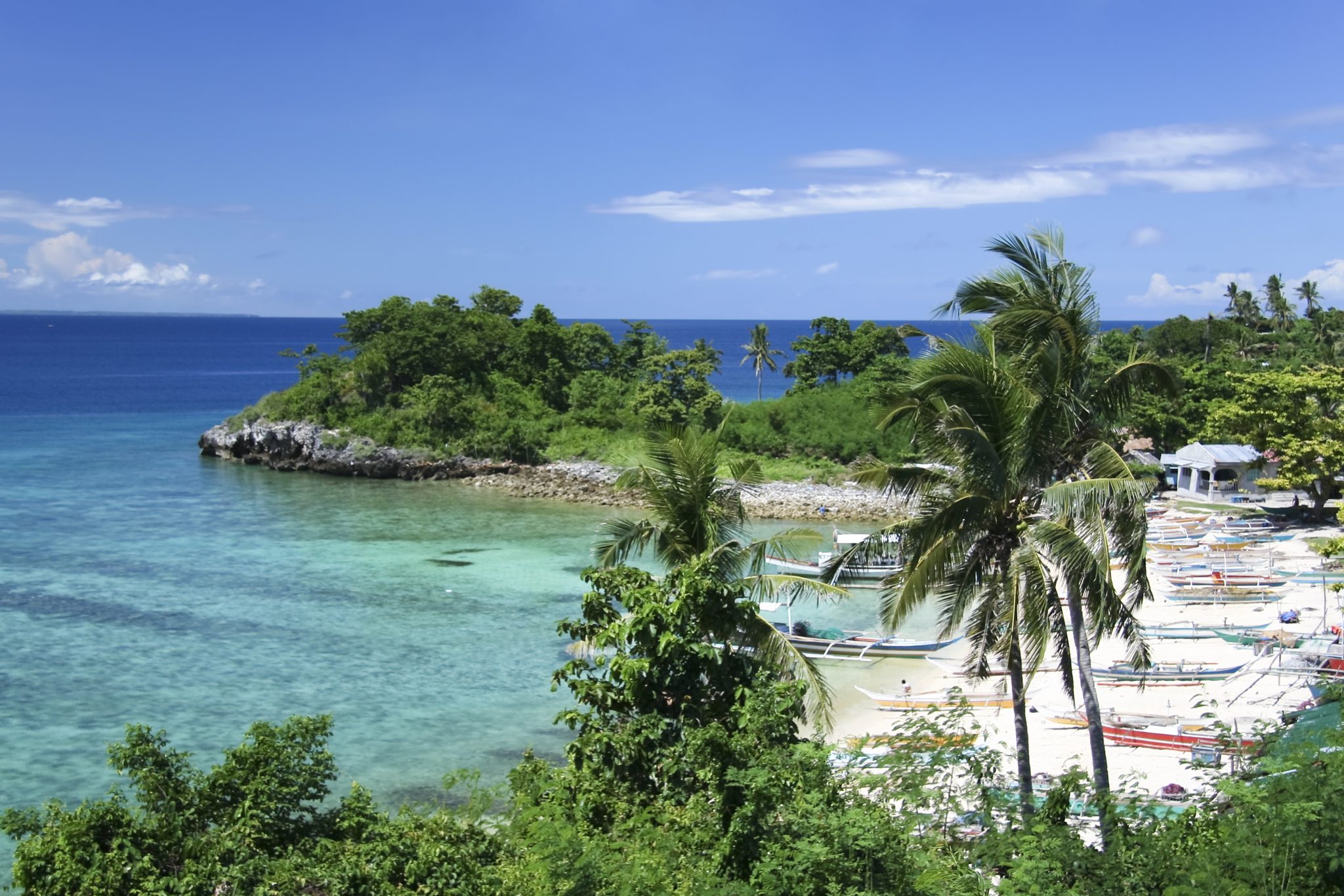
There’s Even More to Malapascua Than Thresher Sharks
Malapascua’s dive sites are famous for being home to a variety of interesting creatures – not only pelagic thresher sharks. Around the island you can also spot whitetip sharks, different species of seahorses and pipefishes (including ghost pipefish and pygmy seahorses), squid, porcelain anemone crabs, cuttlefish, schools of tropical fish, and more than 100 species of nudibranchs. Moreover, there’s a possibility of seeing hammerhead sharks (also from January to April), as well as dolphins, manta rays, mobulas, and eagle rays.
Ready to Book Your Malapascua Diving Holiday?
Do you want to dive with the incredible thresher sharks of Malapascua? Learn more about Malapascua and all it has to offer on PADI Travel!
If you have any questions or concerns, or simply need some knowledgeable advice, speak to one of our experienced travel advisors who are also passionate divers – just like you!
Guest article written by Mario Passoni
